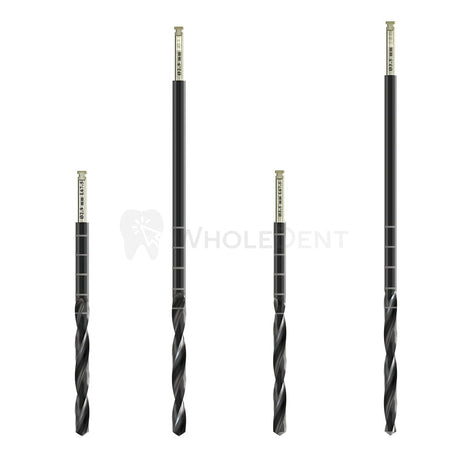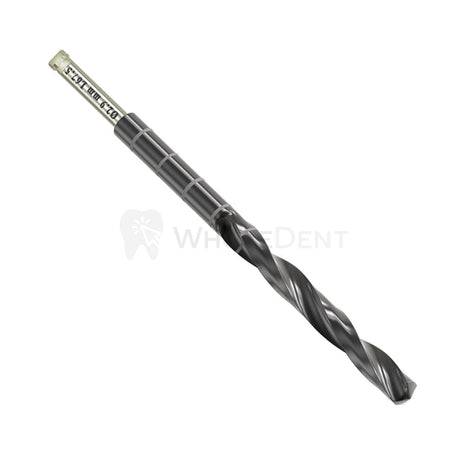GDT Implants Trephine Bur Drills
$65.00 as low as $58.50Unit price /UnavailableGDT Implants Integral Stopper Drill Ø2.0mm
$59.90 as low as $53.91Unit price /UnavailableGDT Implants Tissue Punch Drills
$65.00 as low as $58.50Unit price /Unavailable- $49.90 as low as $44.91Unit price /Unavailable
GDT Long Lance Drills For One Piece Implants
$49.90 as low as $44.91Unit price /UnavailableGDT Implants Diamond Drum Bur For Zygomatic Implants
$55.00 as low as $49.50Unit price /UnavailableGDT Implants Integral Stopper Drill Ø4.5mm
$60.00 as low as $54.00Unit price /UnavailableGDT Implants DLC Zygomatic Drills For Zygomatic Implants
$79.90 as low as $71.91Unit price /Unavailable- $45.00 as low as $40.50Unit price /Unavailable
- $59.90 as low as $53.91Unit price /Unavailable
GDT Straight Drills 16mm External Irrigated
$49.90 as low as $44.91Unit price /UnavailableGDT Implants Integral Stopper Drill Ø3.65mm
$59.90 as low as $53.91Unit price /Unavailable- $49.90 as low as $44.91Unit price /Unavailable
DSI Trephine Drill With Guiding Pin Ø8.0mm
$55.00 as low as $49.50Unit price /UnavailableGDT Guided Surgery Drill Ø2.0mm External Irrigated + Guide Sleeve G5.0
$79.00 as low as $71.10Unit price /UnavailableGDT Basal/Cortical Long Straight Drill Ø3.2mm
$79.90 as low as $71.91Unit price /UnavailableGDT DLC Basal/Cortical Conical Drill Ø2.0mm-Ø3.2mm
$79.90 as low as $71.91Unit price /UnavailableGDT DLC Basal/Cortical Pilot Drill Ø2.0mm
$79.90 as low as $71.91Unit price /UnavailableGDT Short Lance Drills For One Piece Implants
$49.90 as low as $44.91Unit price /UnavailableGDT Implants Round Bur Ø2.4mm For Zygomatic Implants
$55.00 as low as $49.50Unit price /UnavailableGDT DLC Conical Integral Stopper Drills Ø2.8mmXØ4.5mm
$65.00 as low as $58.50Unit price /UnavailableGDT DLC Conical Integral Stopper Drills Ø2.8mmXØ4.0mm
$65.00 as low as $58.50Unit price /UnavailableGDT DLC Conical Integral Stopper Drills Ø2.8mmXØ3.7mm
$65.00 as low as $58.50Unit price /UnavailableGDT DLC Conical Integral Stopper Drills Ø2.1mmXØ3.3mm
$65.00 as low as $58.50Unit price /UnavailableGDT DLC Conical Integral Stopper Drills Ø1.9mmXØ2.7mm
$65.00 as low as $58.50Unit price /UnavailableGDT Implants Integral Stopper Drill Ø2.5mm
$59.90 as low as $53.91Unit price /UnavailableGDT Implants Integral Stopper Drill Ø4.0mm
$59.90 as low as $53.91Unit price /UnavailableGDT Implants Integral Stopper Drill Ø3.2mm
$59.90 as low as $53.91Unit price /UnavailableGDT Implants Integral Stopper Drill Ø2.8mm
$59.90 as low as $53.91Unit price /UnavailableGDT Implants Integral DLC Step&Stop Drill Ø4.0mm
$65.00 as low as $58.50Unit price /UnavailableGDT Implants Integral DLC Step&Stop Drill Ø3.65mm
$65.00 as low as $58.50Unit price /UnavailableGDT Implants Integral DLC Step&Stop Drill Ø3.2mm
$65.00 as low as $58.50Unit price /UnavailableGDT Implants Integral DLC Step&Stop Drill Ø2.8mm
$65.00 as low as $58.50Unit price /UnavailableGDT Straight Drill with Stoppers Set Ø5.2mm
$125.00 as low as $112.50Unit price /UnavailableGDT Straight Drill with Stoppers Set Ø4.2mm
$125.00 as low as $112.50Unit price /UnavailableGDT Straight Drill with Stoppers Set Ø3.65mm
$125.00 as low as $112.50Unit price /UnavailableGDT Straight Drill with Stoppers Set Ø3.2mm
$125.00 as low as $112.50Unit price /UnavailableGDT Straight Drill with Stoppers Set Ø2.8mm
$125.00 as low as $112.50Unit price /UnavailableGDT Straight Drill with Stoppers Set Ø2.5mm
$125.00 as low as $112.50Unit price /Unavailable- $19.90 as low as $17.91Unit price /Unavailable
- $19.90 as low as $17.91Unit price /Unavailable
- $19.90 as low as $17.91Unit price /Unavailable
- $19.90 as low as $17.91Unit price /Unavailable
- $19.90 as low as $17.91Unit price /Unavailable
- $19.90 as low as $17.91Unit price /Unavailable
- $19.90 as low as $17.91Unit price /Unavailable
GDT Straight Drill with Stoppers Set Ø2.0mm
$125.00 as low as $112.50Unit price /UnavailableGDT Guide Sleeve For Guided Surgery Drill
$25.00 as low as $22.50Unit price /UnavailableGDT Guided Surgery Drill Ø3.65mm External Irrigated + Guide Sleeve
$75.00 as low as $67.50Unit price /UnavailableGDT Guided Surgery Drill Ø3.2mm External Irrigated + Guide Sleeve
$75.00 as low as $67.50Unit price /Unavailable
FAQs
The recommended speed and torque for using implant drills depend on several factors, including the type of drill, bone density, and the specific implant system being used. However, general guidelines are as follows:
Initial Drilling (Pilot Drills):
- Speed: 800-1200 RPM
- Torque: Low, typically around 30-50 Ncm
Subsequent Drilling (Twist Drills, Step Drills):
- Speed: 600-800 RPM
- Torque: Moderate, typically around 35-55 Ncm
Final Drilling (Bone Taps, Countersinks):
- Speed: 200-400 RPM
- Torque: Higher, around 50-70 Ncm
These settings help ensure efficient cutting while minimizing the risk of overheating the bone. Always refer to the specific implant system's guidelines for precise recommendations.
Choosing the right implant drill involves considering implant system compatibility, bone density, drill type, and specific surgical requirements.
Ensure the drill matches your implant system and use specialized drills for different bone densities. Select the appropriate drill type (pilot, twist, step) based on the procedure stage and match the drill size to the implant diameter for precise osteotomies. Consider irrigation needs and specific speed and torque settings.
Drills are generally designed to be universal, allowing for some flexibility in their use across different implant systems. However, it is crucial to ensure that the dimensions, thread patterns, and protocols align properly with the implant being used. At Wholedent.com, we offer a wide range of different drill types to ensure optimal fit and performance.
Preventing bone overheating during drilling is crucial for successful implant procedures. Use copious irrigation with sterile saline to cool the bone and flush away debris. Employ the recommended drill speed and torque settings to minimize friction and heat. Always use sharp, well-maintained drills and apply a gentle, intermittent drilling technique to allow cooling between intervals. Proper drill selection for specific implant and bone density is also important.
At Wholedent.com, we offer high-quality drills designed for optimal performance and minimal heat generation. Our team is available to assist with any questions you may have.




































































































